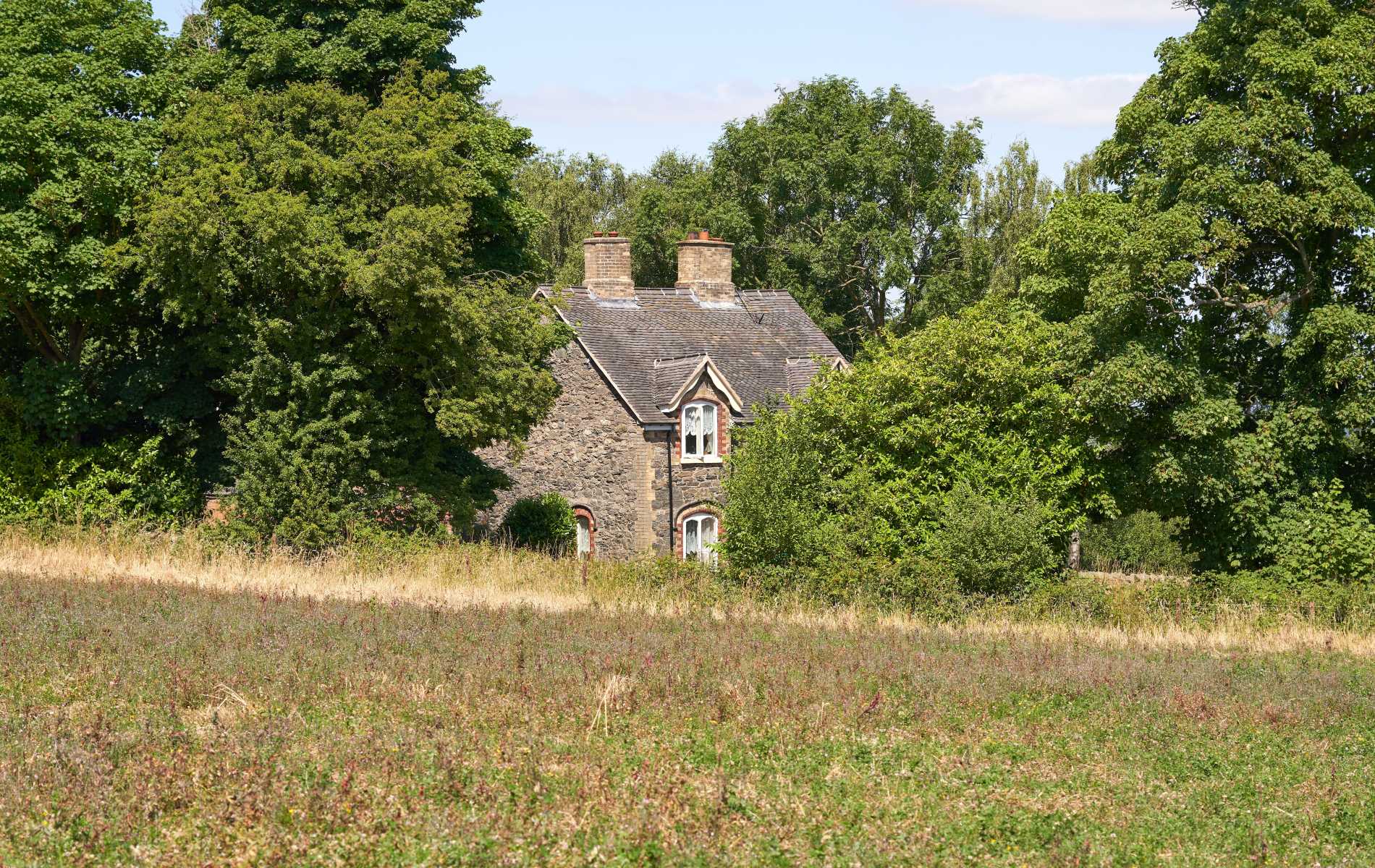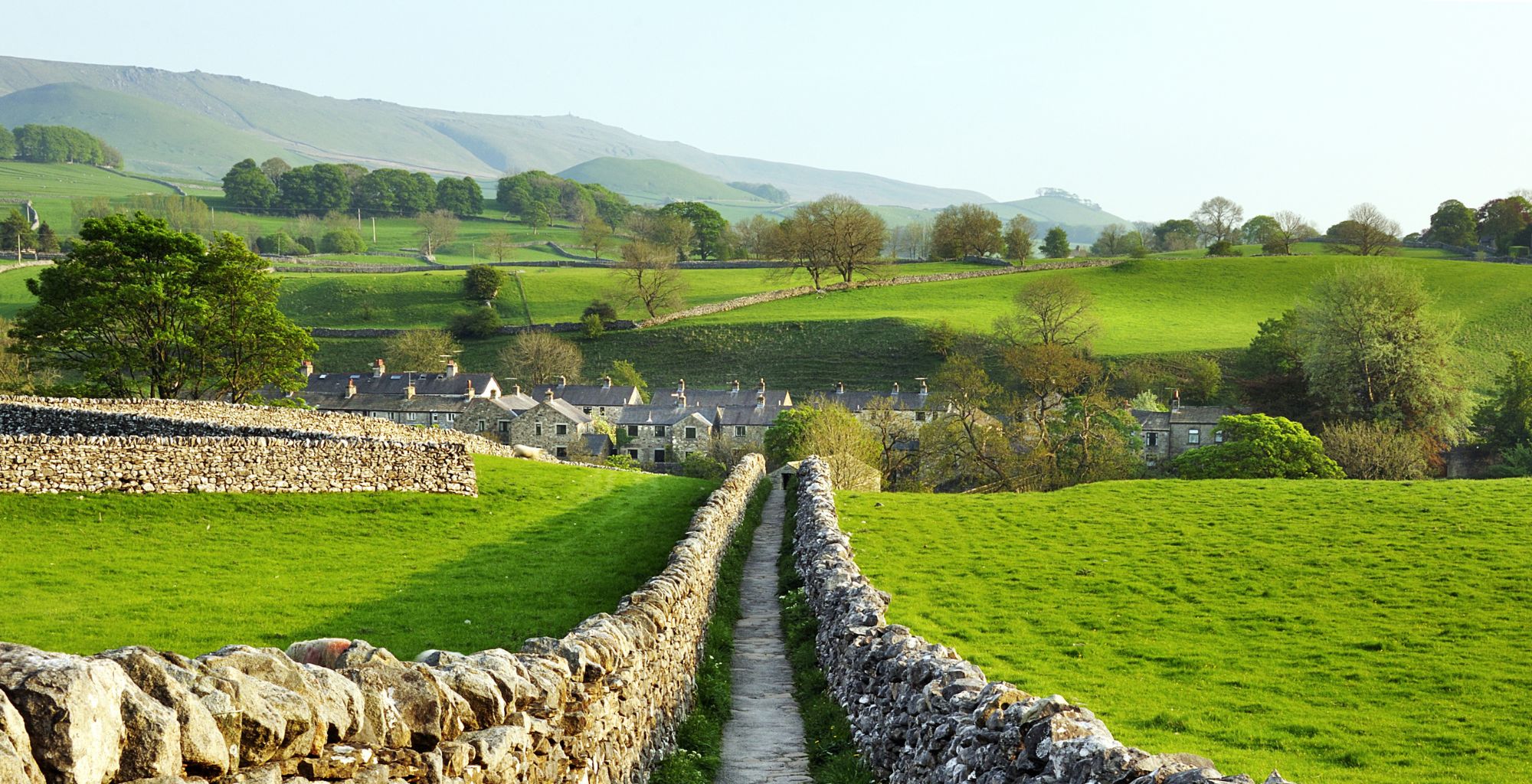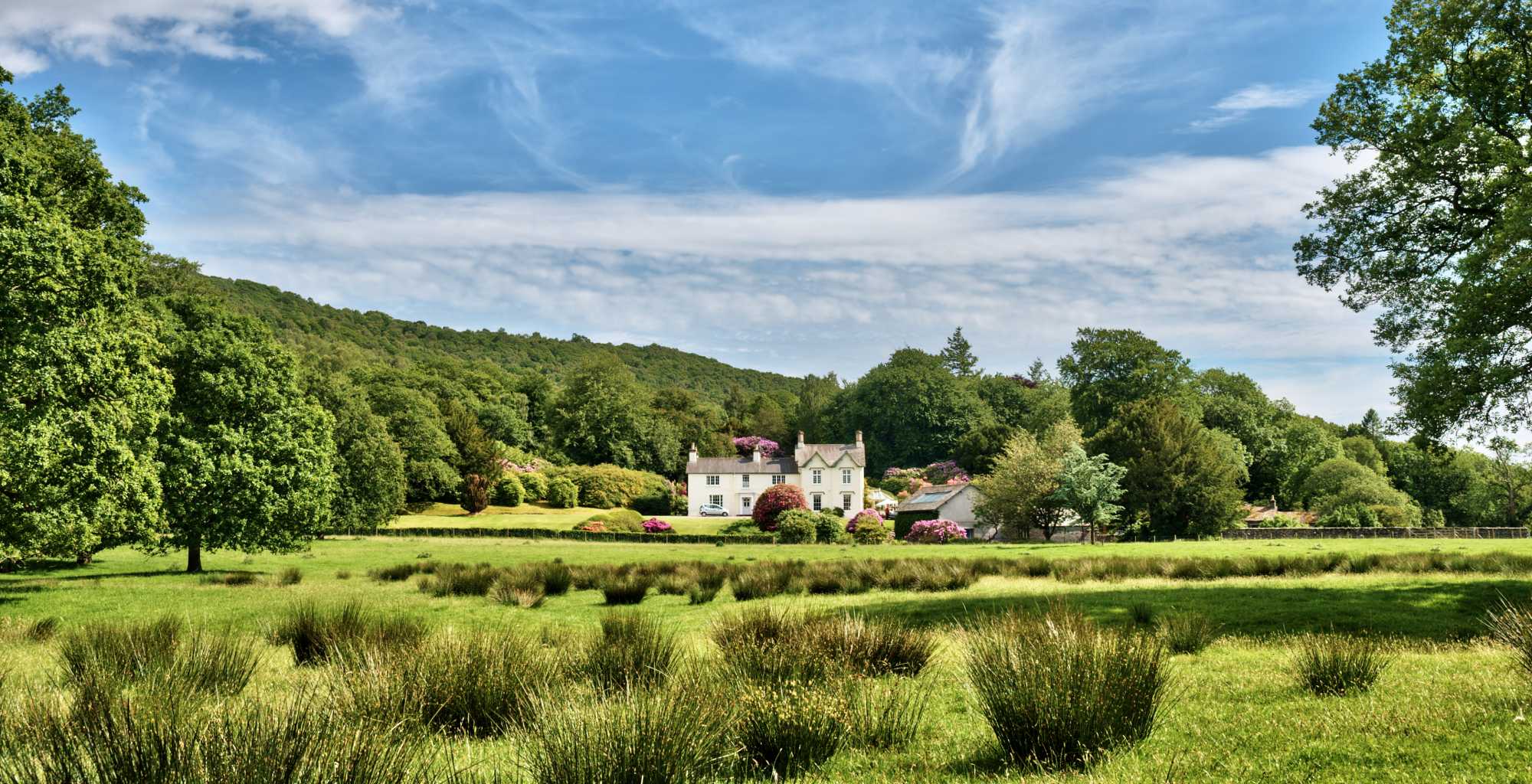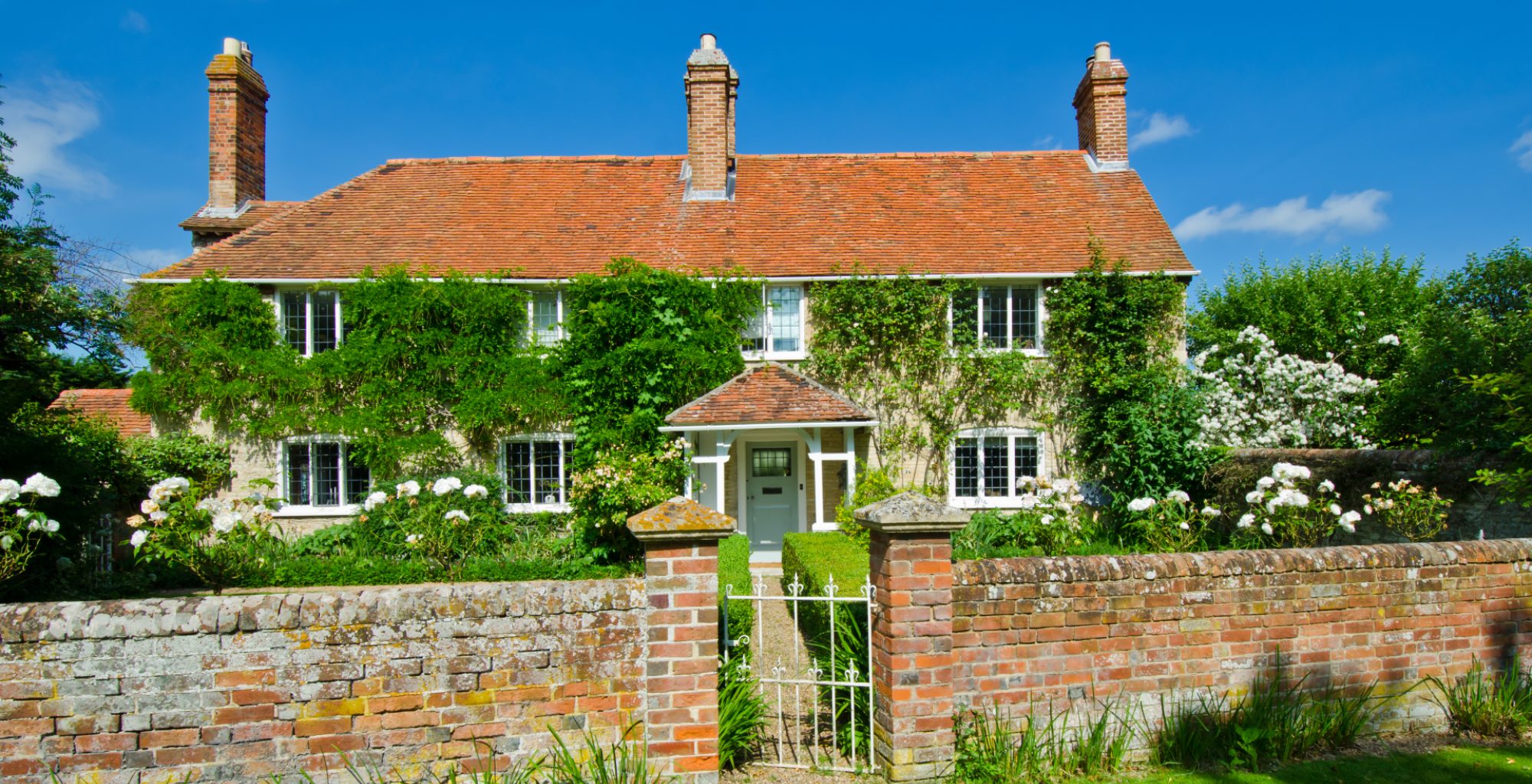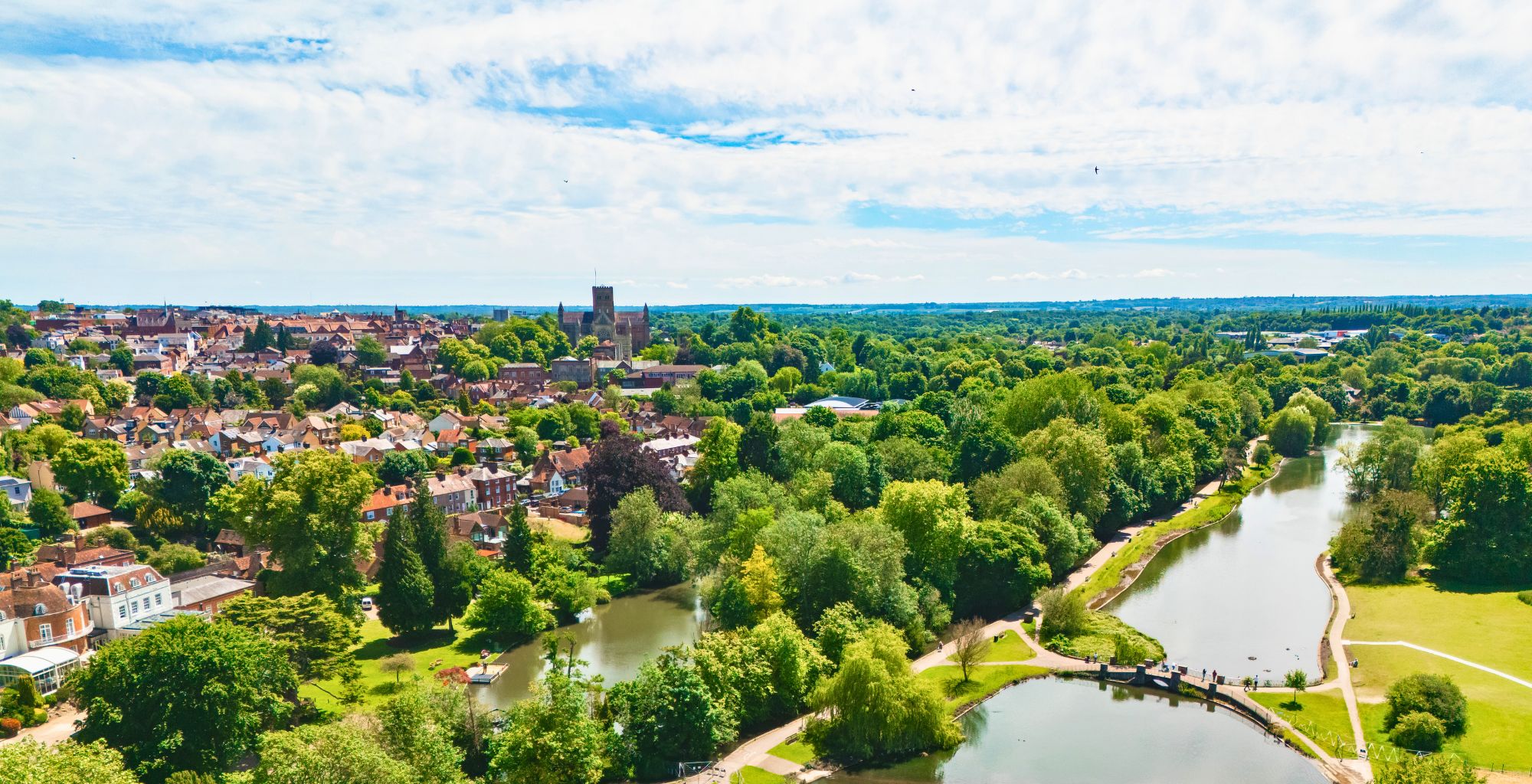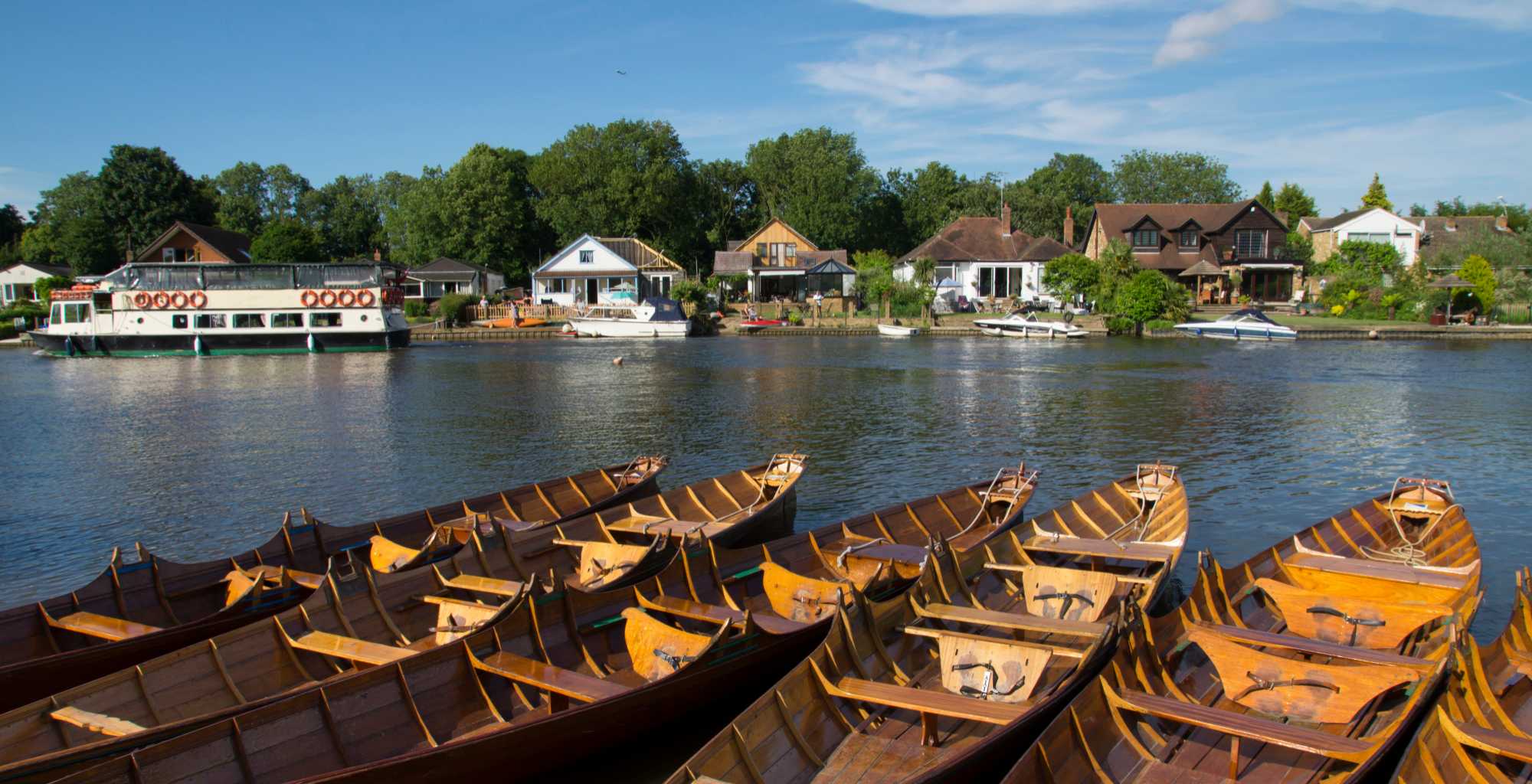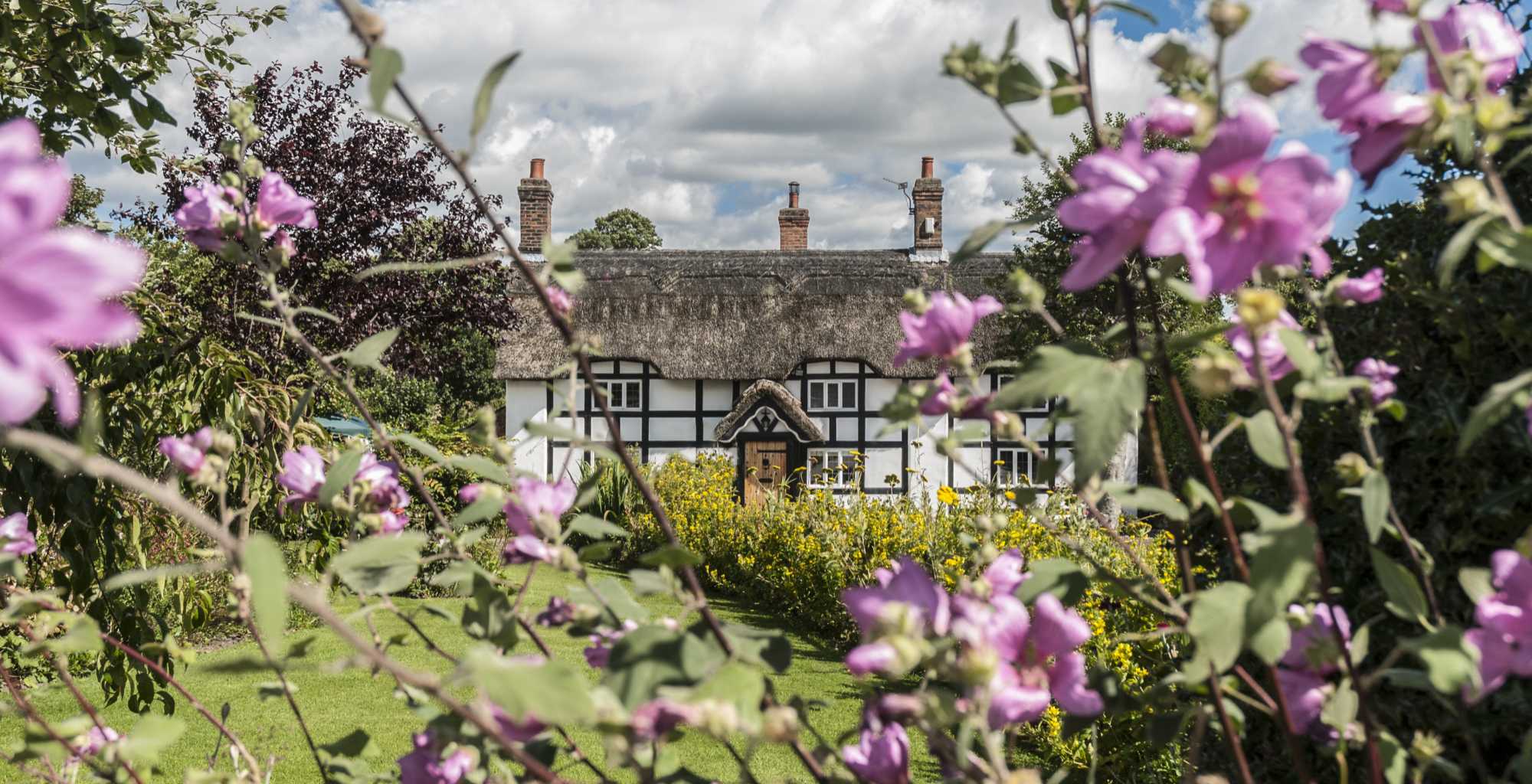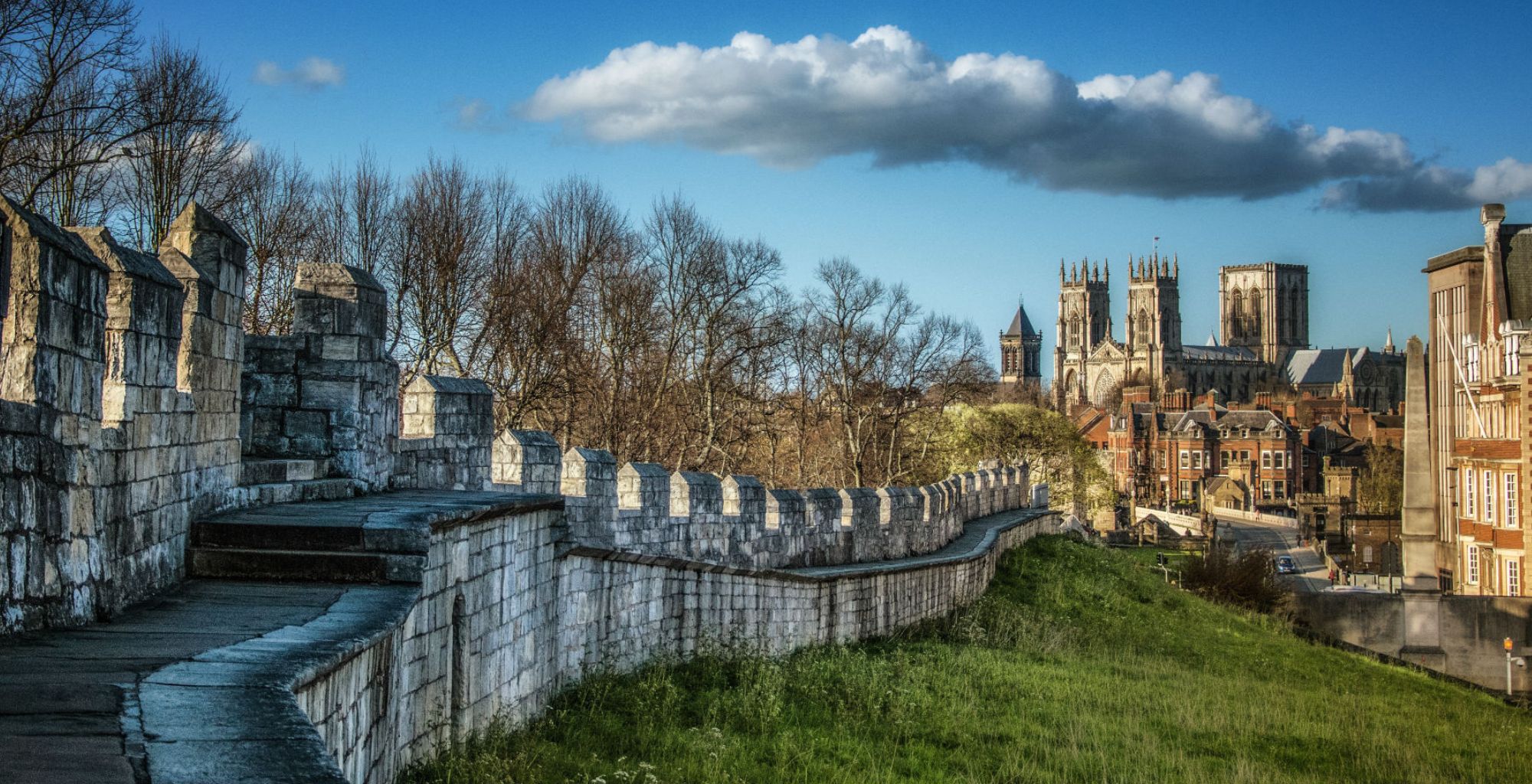Are you looking for a place to live that offers around a 30 minute commute to London? Whether you...
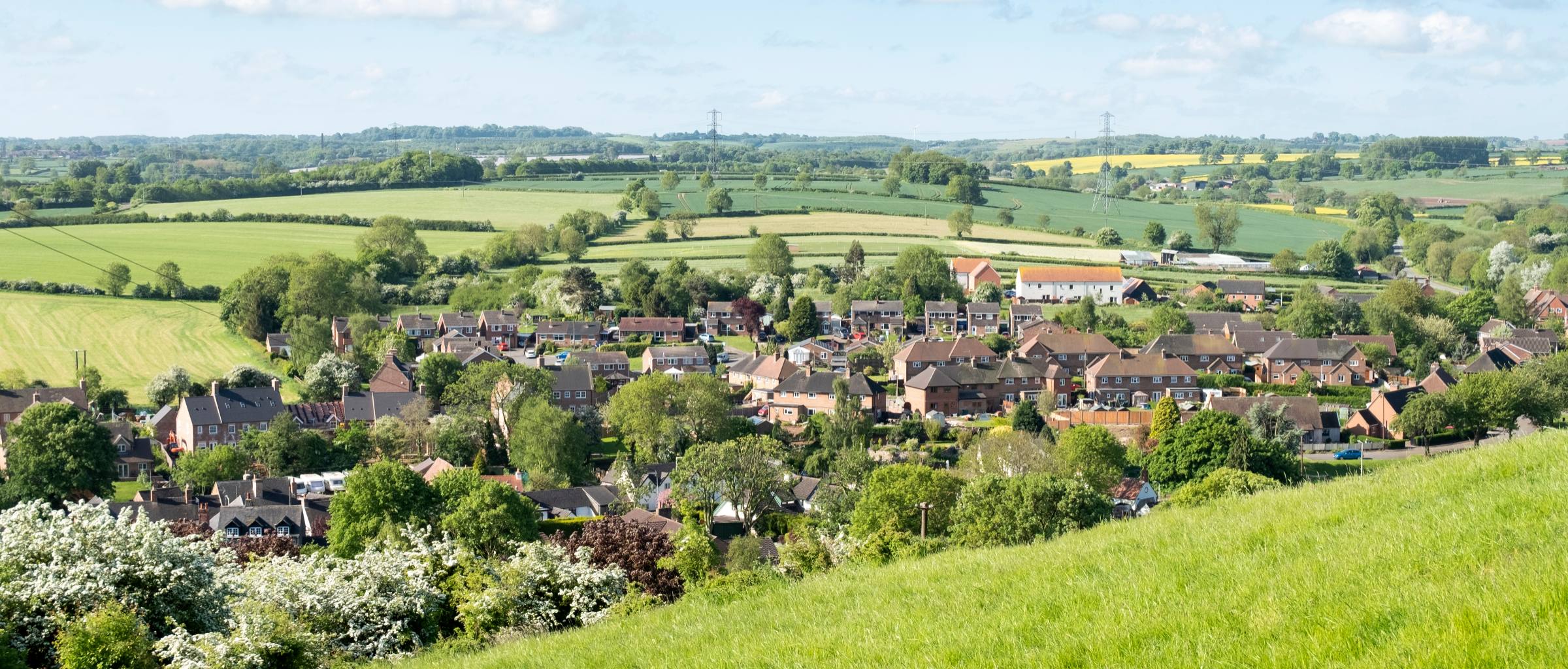
The best places to live in the East Midlands
Looking for the best places to live in the East Midlands?
There is a picture postcard patchwork of quintessentially English villages and market towns that make this region immediately appealing.
Just as the name suggests, the East Midlands can be found in the very heart of England – where you can be assured of quick and easy links to anywhere else in the country.
But it is not without its economic and commercial attractions too. The region is the subject of a devolution agreement between the government and the four local authorities of Derby, Derbyshire, Nottingham, and Nottinghamshire as part of the Levelling-Up and Regeneration initiative.
This wonderful part of the country offers a comfortably quiet and peaceful pace of life.
In this article, we feature some of the best places to live in the East Midlands so you can start your search.
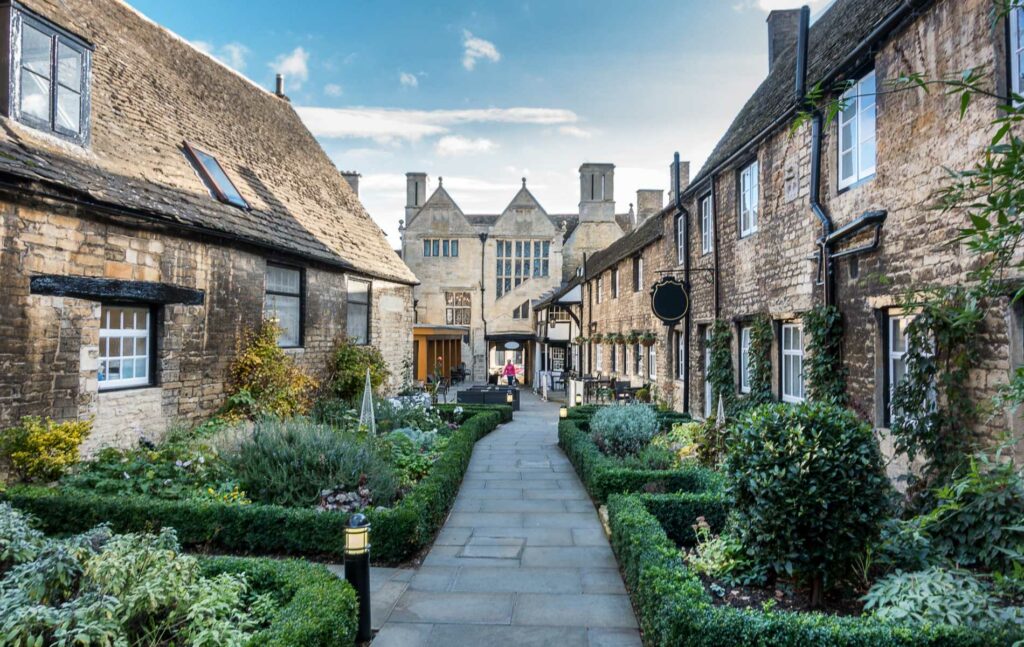
Oundle
Key facts:
- Amenities: Although it is a small town – and only 14 miles or so southwest of the urban hub of Peterborough – Oundle boasts several supermarkets, as well as a wide selection of independent stores including a hardware store, The Oundle Book Shop, a florist, two butchers and the Hambleton Bakery;
- Education: The centre of the town is dominated by Oundle School – one of the country’s top co-educational independent boarding schools for pupils aged between 11 and 18. In the public sector, Oundle Church of England Primary School (for ages 5-11) and the Academy Prince William School (for ages 11-18) are reputed for their high standards;
- Transport links: between Oundle and the urban hub of Peterborough lies the major national north-south arterial route the A1(M) with London just a roughly 2½-hour drive due south. To the west is the main M1 motorway – also for points north and south – including the East Midlands Airport, which is approximately an hour and 15 minutes away by car;
- Trains: from nearby Peterborough, two trains an hour currently run south to London (taking around an hour) and north to York.
Why live in Oundle?
Oundle oozes all the charm and attraction of a long-established English market town. It remains a highly sought-after small town that attracts its fair share of wealthy homeowners looking to downsize in the East Midlands.
The picturesque town is renowned for its Georgian houses and impressive limestone buildings which contribute to the strong sense of local community. That community spirit extends to an active social calendar for church activities, events at the local library, and clubs such as the Oundle Historical Society.
Empingham
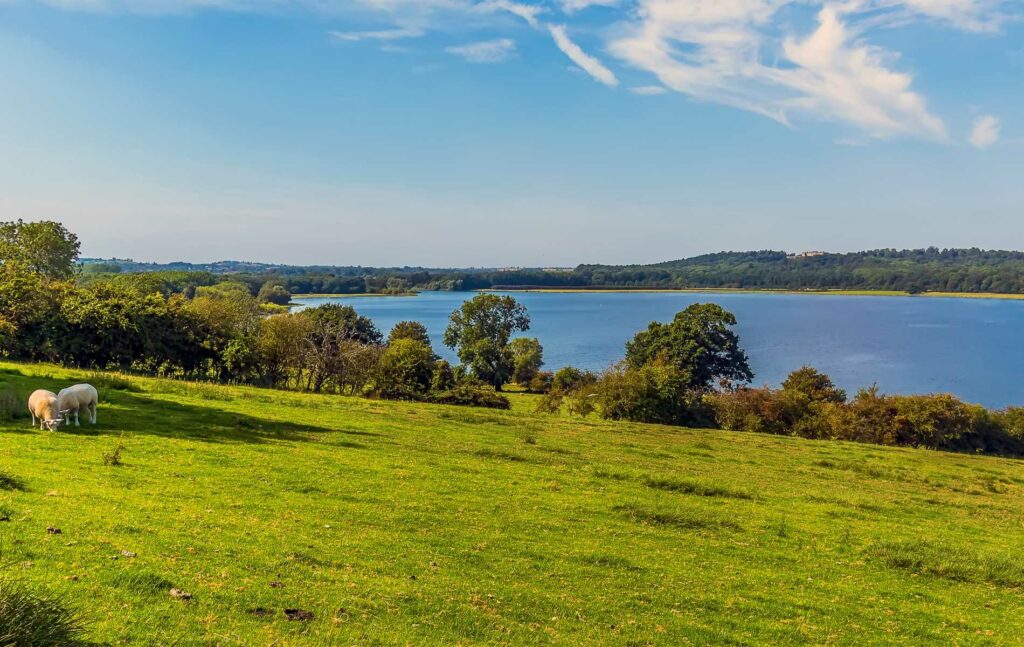
Key facts:
- Amenities: Empingham is a village in Rutland but retains its own general stores and several pubs, with restaurants nearby. The nearest town of Stamford – itself renowned as one of the finest towns of stone buildings in the UK – is just 6 miles away, and here you will find the full array of all manner of independent shops;
- Education: this part of the East Midlands is renowned for the high quality of its many independent schools, with the likes of those at Oakham, Uppingham, Oundle, Witham and Stamford just a few miles from Empingham itself. In the public sector, Empingham Church of England Primary School and the Academy status Harington School (for sixth formers), in nearby Oakham, are highly regarded;
- Transport links: Empingham is well served by the two major north-south motorways – the A1(M) immediately to the east and the M1 only a few miles to the west. This puts London within 100 miles or so the south – a drive of roughly an hour and a half. Birmingham and the Midlands’ major conurbation is just 70-80 miles away via the motorways M6 and M69;
- Trains: fast trains from the station at Oakham (just 6 miles away) arrive in London King’s Cross within roughly an hour and 40 minutes. Oakham station is on the main Peterborough to Birmingham line, providing services to England’s second biggest city along with Leicester and Stanstead Airport.
Why live in Empingham?
The rural setting of Empingham is made all the more attractive by its proximity, at the “dam end”, to Rutland Water, which is Europe’s biggest manmade reservoir.
While the dam was under construction in the 1970s, archaeologists were able to confirm that there have been settlements in and around what is now the village of Empingham since as early as the Iron Age and that remains exist of both Romano-British and Anglo-Saxon communities.
The character and appearance of Empingham today reflect a significant and lasting impact made by a local family called Heathcote, who were the principal landowners in the area from the mid-18th until the early 20th century.
Ufford

Key facts:
- Amenities: Ufford is a small village, set in the county of Cambridgeshire and approximately 5 miles equidistant from the regional centres of both Peterborough to the southeast and Stamford to the northwest, where you will find the full range of shops, restaurants, and leisure activities;
- Education: the local John Clare Primary School, in nearby Peterborough, and Casterton College Rutland, for pupils aged 11 to 16, in nearby Stamford are well regarded. Leading independent schools and colleges include Stamford School (shortlisted for the Independent Schools Awards by the Times Education Supplement in 2021) and Oundle School, 15 miles to the south of Stamford;
- Transport links: the journey by road to central London takes approximately 2 hours – a relatively direct and easy drive thanks to access to the main A1(M) motorway at Peterborough. The Midlands conurbations of Birmingham and Coventry (as well as the regional East Midlands Airport) are about one and a half hours away by road;
- Trains: the mainline railway station is just 5 miles away in Peterborough, where there are twice-hourly services to London King’s Cross in journey times of roughly 50 minutes.
Why live in Ufford?
Even by English village standards, Ufford is a small community – the latest census in 2001 listed a resident population of just 226 in 96 households. Typical of many small communities, the focal points for many activities remain the church (St Andrew’s) and the pub (the 17th century White Hart).
Well into the 20th century Ufford was entirely dependent and largely self-sufficient from its farming industry. Today, there remains just one working farm, and the inhabitants of the village are mostly commuters to Peterborough and Stamford – with some travelling regularly to London for their work.
Elton, Northants
Key facts:
- Amenities: Elton is a village on the borders of Northamptonshire and Cambridgeshire, just 7 miles southwest of the urban centre of Peterborough, where you’ll find most of the shops, restaurants, and places of entertainment. The village itself boasts two pubs – the Crown Inn and the Black Horse – which serve as effective community centres;
- Education: The reputable Elton Church of England Primary School is in the village, while older state school pupils will likely travel to Peterborough, where The King’s (The Cathedral) School is held in high regard as is the independent, co-educational Peterborough School for children aged 7 to 18;
- Transport links: Elton lies just 3 or 4 miles to the west of the major north-south trunk road, the A1(M) – with routes to the north via Samford and to the south via Stilton all the way to London. The centre of the capital is approximately 84 miles away – a drive of roughly two and a half hours;
- Trains: the mainline railway station is in nearby Peterborough, where there are twice-hourly services to London King’s Cross in journey times of roughly 50 minutes.
Why live in Elton, Northants?
The rural idyll of Elton has everything you could want from a village – streams, meadows and lots of open space.
It is a largely unspoilt landscape and is the perfect setting for the impressive country mansion Elton Hall, which has stood in its parkland since the 12th century.
The village also sits on the banks of the River Nene – the tenth longest river in the country – providing the perfect setting for walks along its meandering banks, picnics, or even a spot of fishing.
Uppingham
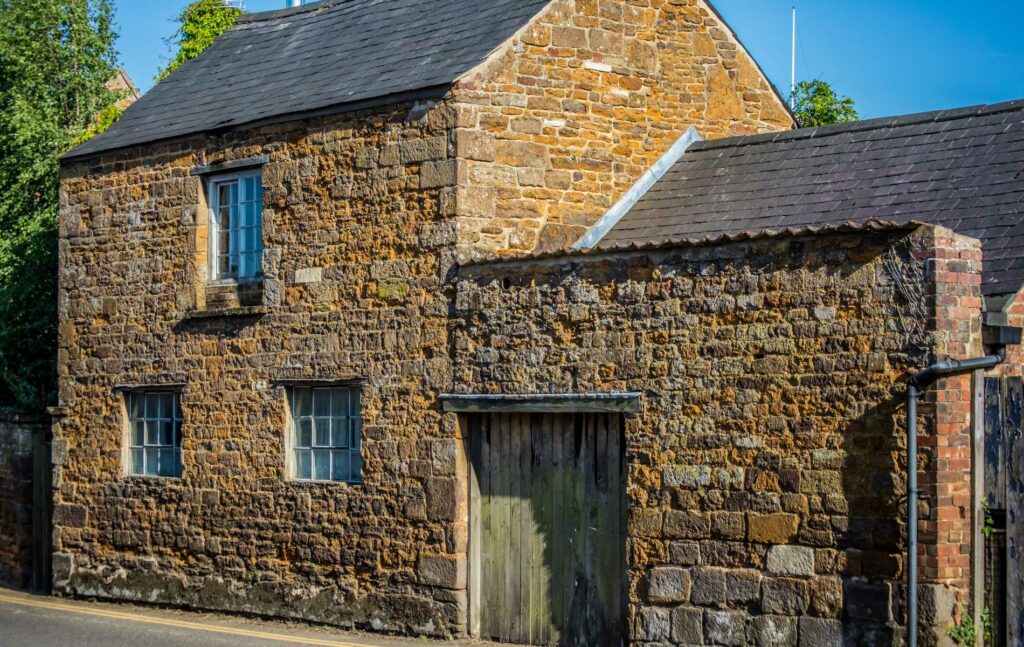
Key facts:
- Amenities: Uppingham is a small market town that lies 6 miles south of Oakham, the county town of Rutland. It still holds a weekly street market, and there are many independent, family-run shops and businesses – with antiques and art galleries seeming to do especially well in this much-visited town;
- Education: Uppingham is probably best known for its leading independent school, Uppingham School, founded in 1584, and its impressive buildings continue to dominate the southwestern part of the town. In the public sector, Leighfield Primary School for ages 4 to 11 is well regarded, as is Uppingham Community College for 11 to 16 year-olds;
- Transport links: there are two principal north-south trunk routes from Uppingham to London. Probably the fastest is joined at Peterborough and a 115-mile journey via the M11 to the capital under three hours or the M1 motorway for approximately the same journey time;
- Train: the nearest mainline railway station is at Oakham, where frequent trains connect to London King’s Cross is a journey time of approximately just under two hours.
Why live in Uppingham?
Uppingham is the epitome of the English market town, its market has been operating since the 14th century. It maintains a solid sense of community and, we feel, is one of the best places to live in the UK.
Informal activities abound – from children’s dance classes to Tai Chi for the grown-ups and folk groups to the weekly charter street market every Friday.
The town boasts several stylish restaurants, invitingly cosy English tea rooms, welcoming pubs, and a wide range of hotels in both the town and the surrounding countryside.
Harringworth/Seaton
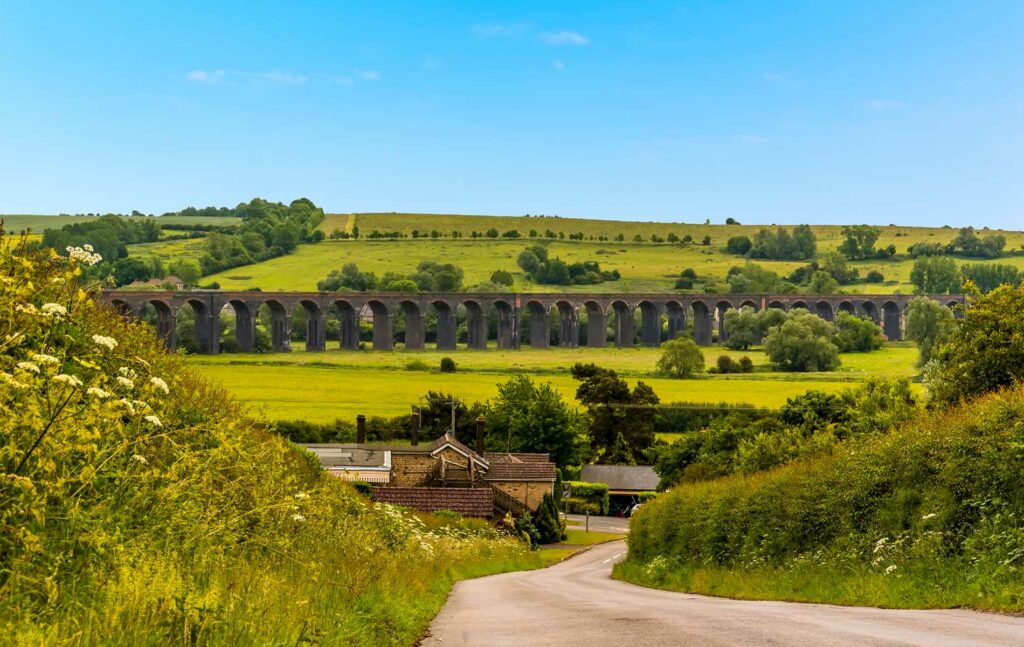
Key facts:
- Amenities: the villages of Harringworth and Seaton are Northamptonshire villages close to the border with Rutland and near the town of Corby, 7 miles away, where you will find most of your local shops, doctors’ surgeries, and the like. For greater choice, you might want to venture as far as Peterborough – some 20 miles away;
- Education: public sector schools in Corby offer very high standards; Corby Primary Academy, Brooke Weston Academy (for pupils aged 11-18), and Corby Technical School. The leading co-educational, independent boarding school, Oundle School (founded in 1556), is just 12 miles away;
- Transport links: Harringworth and Seaton are set in the depths of the Northamptonshire countryside yet relatively easy access to the main north-south arterial motorway, the A1(M) brings central London just 2½ hours away (113 miles);
- Trains: the nearest mainline railway station is at Oakham – some 10 miles away – where frequent trains to central London (King’s Cross/St Pancras) make the journey in somewhat less than two hours.
Why live in Harringworth/Seaton?
Some have described Harringworth as the most beautiful village in Northamptonshire.
Set in verdant countryside in the heart of England, the villages of Harringworth and Seaton have the impressive Welland Viaduct as their unique and stunning backdrop.
This feat of Victorian engineering was built between 1876-1878 as part of the Manton to Kettering branch line of the Midland Railway Company. At 1,275 yards (1,166 metres) long, it is the longest viaduct in England and features 82 separate arches.
Because Harringworth and Seaton are small villages, it takes only a short while to walk their lanes and admire the simple architecture. The area attracts many visitors in the Spring and early summer when the settlements are resplendent in flowers and seasonal foliage.
Nassington
Key facts:
- Amenities: Nassington is similar to a host of other small English villages in that a strong sense of community is maintained through the church, the pub (in Nassington’s case, there are two, the Black Horse and the Queen’s Head) and the village store (Nassington Stores, which also hosts the local Post Office);
- Education: the village boasts its own quality primary school, Nassington Primary School. For secondary education in the public sector, The King’s (The Cathedral) School in Peterborough – just 11 miles to the east – offers top-class education. One of the country’s leading independent schools, Oundle School, is only six miles to the south of Nassington;
- Transport links: Nassington lies just to the west of the major north-south A1(M) motorway but also close to the M1 and M11 motorways, all of which provide easy access to the 100-mile or so drive to central London in around two hours;
- Trains: the mainline railway station is just 11 miles away in Peterborough, where there are twice-hourly services to London King’s Cross in journey times of roughly 50 minutes.
Why live in Nassington?
Nassington is a picturesque, quintessentially English village set on the banks of the meandering River Nene – good for your morning or afternoon stroll, picnics, or even a spot of fishing.
Like many a small village, there is a strong sense of local community. The Parish Council meets every second Wednesday of the month in the village hall – and among the burning topics on the agenda for July 2022 included nuisance caused by muntjac deer on the local allotments, community engagement in planning and development matters, and formulation of a neighbourhood plan.
Nearby Prebendal Manor is said to be one of the oldest continually inhabited houses in England, dating back over 1,000 years to the time of King Cnut.
Woodhouse Eaves
Key facts:
- Amenities: Woodhouse Eaves’ village looks out onto Beacon Hill’s slopes, close to Charnwood Forest, Leicestershire. It lies between the large town of Loughborough to the north and the City of Leicester to the south. The village supports a shop, chemists, a cake shop, and two doctors’ surgeries;
- Education: there are two esteemed primary schools in nearby Loughborough (5 miles away) and, for pupils aged 11 to 18, Rawlins Academy, in Loughborough, is renowned for its good standards. The independent boarding school, Loughborough Grammar School (founded in 1495), is described in the Independent Schools Inspection Report for 2022 as “excellent in all areas”;
- Transport links: because it lies immediately to the east of the M1 motorway (with access ramps at Leicester), a direct route to central London is just 113 miles away, and a drive of roughly 2½ hours – depending, of course, on traffic;
- Trains: the mainline railway station at Leicester (9 miles away) has frequent and fast services to London, Nottingham, Birmingham, Manchester, Sheffield, and Liverpool.
Why live in Woodhouse Eaves?
Woodhouse Eaves is the newer and larger of two rural villages – including Woodhouse itself – that make up the parish of Woodhouse.
The community of Woodhouse Eaves grew during a slate quarrying boom in the 19th century – and many of the houses are built of locally hewn granite and slate roofs. Parts of the parish are designated for their conservation value (APAC), while still further areas are designated as sites of special scientific interest (SSSI).
The open farmland surrounding the villages of Woodhouse and Woodhouse Eaves is ideal for walking and horse riding.
Hambleton, Rutland
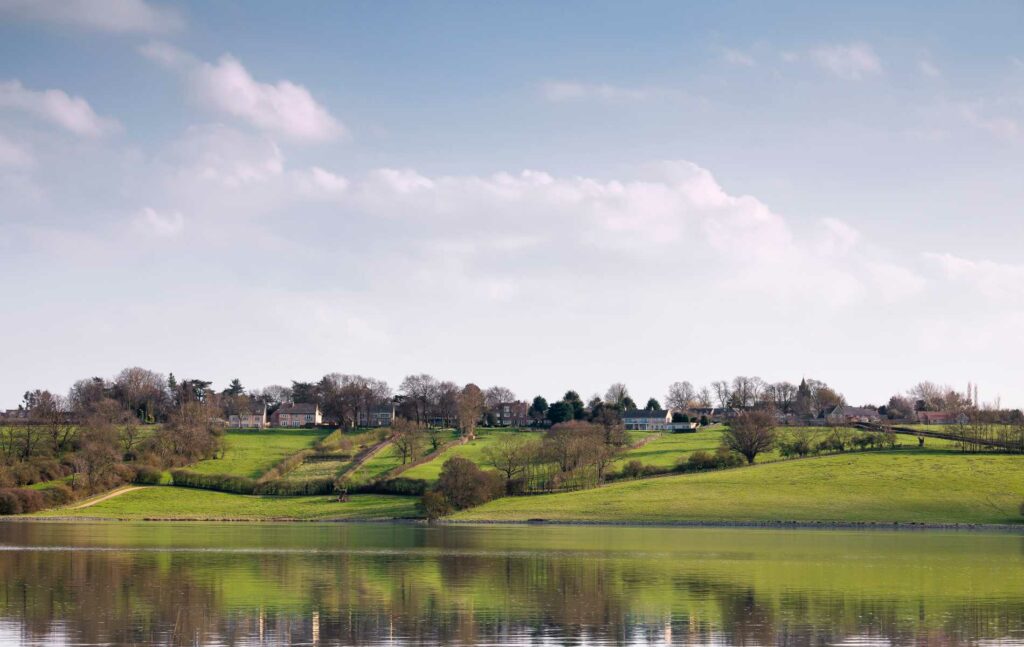
Key facts:
- Amenities: Hambleton is a small village located on a peninsula that sticks out into Rutland Water, some 2 miles east of the county town of Oakham. You would not expect many shops or stores in the village, although there is the locally very popular Hambleton Bakery. The nearest doctor is at Oakham Medical Practice;
- Education: there are well-regarded primary schools in nearby Oakham, while at secondary and sixth form level, Catmose College (ages 11-16) and Harington School (16-18) offer high educational standards. The independent, co-educational boarding school, Oakham School (ages 9-18), was founded in 1584 and achieved the highest possible grading in the latest Independent Schools Inspectorate’s (ISI) report;
- Transport links: although Hambleton’s location on a peninsula in Rutland Water leaves it relatively remote, there are three options for major routes south to London or to the north – the M11 (via Cambridge), the A1(M) (via Peterborough), and the M1 (via Leicester);
- Trains: frequent train services from the mainline station at Oakham reach London’s King’s Cross or St Pancras within less than 2 hours.
Why live in Hambleton, Rutland?
Some would say that Hambleton is one of the best places to live in the county of Rutland with a “more genteel type of resident” attracted to this millionaires’ playground.
For the best part of the year, you are free to enjoy the quiet and peaceful life that comes through being in the middle of Europe’s most expansive stretch of the manmade reservoir – though its natural beauty inevitably attracts its share of summer visitors.
That’s when you might want to retire to one of your favourite watering holes at the 17th-century Finches Arms or the sumptuous luxury of Hambleton Hall.
Langham
Key facts:
- Amenities: only 2 miles to the west of the county town of Oakham is the village of Langham, Rutland, with a population of roughly 1,200 souls and where you will find a lively community that also supports an annual street market. Oakham Medical Practice hosts the local team of NHS doctors;
- Education: A high standard of education is provided by Langham Church of England Primary School and, in Oakham Catmose College (ages 11-16) and Harington School (16-18). The independent, co-educational boarding school, Oakham School (ages 9-18), was founded in 1584 and is notorious for its high standards.
- Transport links: road links via Oakham – and, from there to Peterborough – offer three motorway options for the roughly 2½-hour drive to central London, the A1(M), the M1, and the M11;
- Trains: frequent train services from the mainline station at Oakham reach London’s King’s Cross or St Pancras within less than 2 hours.
Why live in Langham?
Surrounded by fertile farmland, Langham describes itself as “a lively village, with sociable people who are supportive of each other”.
The whole village – together with some of the surrounding area – is a Conservation Area. There are 40 listed buildings, including the Church of St Peter and St Paul. The village’s name first appeared in Manorial Court documents of 1398 and, until 1926, the parish formed part of the Gainsborough Estate.
The village is in the parliamentary constituency of Rutland and Melton and is represented by the Conservative MP Alice Kearns – a native of nearby Cambridgeshire.
Clipsham
Key facts:
- Amenities: Clipsham is a small village (a population of just 166 souls in the census of 2011) roughly 10 miles equidistant from Rutland’s county town of Oakham to the southwest and Stamford to the southeast – it is to these larger towns that you will look for shopping and visits to the doctor. The town of Grantham is also just 16 miles to the north;
- Education: it is to either Oakham or Stamford that you might also look for excellent schools in the area. Great Casterton Church of England Primary School in Stamford and the twin Academies of Catmose College (ages 11-16) and Harington School (ages 16-19) in Oakham are prime examples. Oakham School – founded in 1584 – is a highly regarded co-educational, independent boarding school for pupils aged 10 to 18;
- Transport links: although it is set in the heart of Rutland’s countryside, the road to nearby Oakham is also bisected by the major national north-south highway, the A1(M), bringing the 100-mile drive into central London just 23/4 hours or so away;
- Trains: the nearest mainline railway station is at Oakham – some 10 miles away – where frequent trains to central London (King’s Cross and St Pancras) make the journey in somewhat less than 2 hours.
Why live in Clipsham?
We recently reported on the popularity of Clipsham among wealthier individuals in search of larger countryside homes.
At the centre of the village social life is the Olive Branch – a fine dining gastropub that was named the overall winner of the UK Pub of the Year by the Good Pub Guide in 2021. If you run desperately short of essentials such as bread, eggs, or toilet rolls, the Olive Branch has been known to sell such items to locals.
Another centre of social life – as in any English village – is the local church, St Mary’s, a Grade II* listed building.
A particular attraction just outside the village is the Yew Tree Avenue – a unique avenue of 200-year-old yew trees that once lined the carriageway entrance to Clipsham Hall.
Market Overton
Key facts:
- Amenities: on the northern edge of Rutland is the village of Market Overton. It boasts a village store and Post Office, a hardware store, home improvements and its own Market Overton and Somerby doctors’ surgery. A greater range of shops can be found in the county town of Oakham, just 7 miles to the south;
- Education: public sector schools can be found in Oakham, with well-regarded primaries, while the Academies of Catmose College (ages 11-16) and Harington School (ages 16-19) offer exceptional standards of education to older pupils. The long-established and very highly regarded Oakham School is a co-educational, independent boarding school for pupils aged 10 to 18;
- Transport links: Market Overton lies just a few miles west of the A1(M) motorway, which runs south through Stamford and Peterborough to central London some 103 miles away – a drive of roughly 3 hours. The East Midlands cities of Nottingham and Leicester are both about 30 miles to the northwest and southwest, respectively;
- Trains: the nearest mainline railway station is at Oakham – some 7 miles away – where frequent trains to central London (King’s Cross/St Pancras) make the journey in somewhat less than 2 hours.
Why live in Market Overton?
Market Overton is an ancient village and – under its name of Overtune (derived from the Saxon “Tun” or “house on the hill”) – was first recorded in the Doomsday Book.
In the past, the village’s fortunes relied first upon agriculture and then quarrying – both of which have declined notably in recent years, although the place remains surrounded by open farmland.
Recently, village residents were invited to contribute their views to the formulation of a new Village Neighbourhood Plan on subjects including the plan’s design, the local economy, the environment, housing, and community Amenities.
Bottesford
Key facts:
- Amenities: Bottesford is the largest of the villages in the Borough of Melton, where the borders of Lincolnshire, Leicestershire, and Nottinghamshire meet. The village has its village stores, a butcher, a fish and chip shop, a coffee shop, the Bull Inn, and the Welby medical practice;
- Education: reputable schools such as local Bottesford Church of England Primary School (ages 4-11) and The Priory Belvoir Academy in the village for 11-16-year-old pupils. Just 18 miles to the west is the City of Nottingham, where the independent co-educational Nottingham High School (ages 4-18) in 2022 was ranked first in academic results in the East Midlands and recognised as the East Midlands Independent School of the Decade in 2021;
- Transport links: via Grantham to the south, the distance to central London is approximately 120 miles and like to take roughly 23/4 hours to drive;
- Trains: there are frequent mainline trains from the railway station at Grantham (8 miles away) to London King’s Cross in journey times of between one hour and an hour and a half.
Why live in Bottesford?
Bottesford is a somewhat “quirky” village – with its mixed bag of different house styles and sizes – but close to the regional hub of Grantham and ideal for commuting within the whole of the East Midlands.
The village lies in the Vale of Belvoir – “beautiful view” in French and a clue to why it has also been voted one of the best places to live in the Midlands.
The immediate area also boasts the Gothic-revival Belvoir Castle and the nearby Hanwell Wine Estate, where the gently undulating hills of Leicestershire and south Nottinghamshire are planted with grapes used for making English sparkling wine.
Lyddington, Rutland
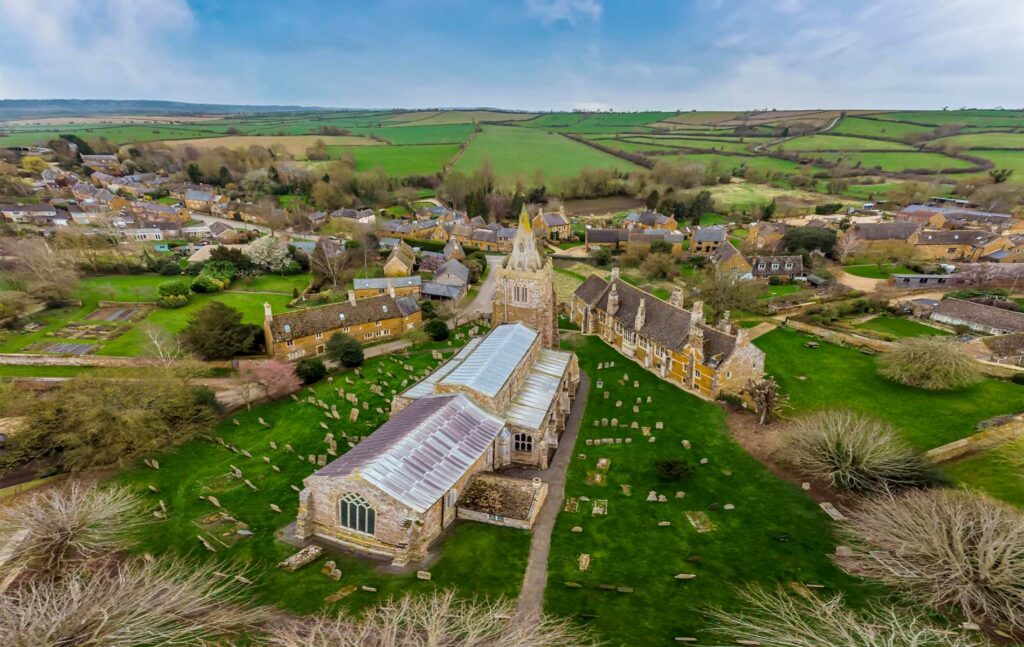
Key facts:
- Amenities: as a small village in the heart of rural Rutland, stores are few and far between but are ten farm shops known to open in and around the immediate area. For a wider choice, there is a short drive of just 7 miles or so to the regional hub of Corby and its sizeable retail park, several medical practices, and a Nuffield Hospital;
- Education: the principal public sector schools are just 3 miles north in Uppingham, notable examples are the local Church of England Primary School (ages 4-11) and the Community College (ages 11-16). Uppingham, of course, is also known for its leading independent school, Uppingham School, founded in 1584, whose buildings continue to dominate the southwestern part of the town. The Good Schools Guide writes that Uppingham School provides an “intellectually rigorous and adaptable education” to its students;
- Transport links: London is approximately 110 miles by road to the south, and there are two fast routes for the drive from Lyddington – one via the A1(M) and the other via the M11, with both taking just under three hours. The City of Leicester is just 22 miles to the west, and other Midlands cities such as Nottingham, Coventry, and Birmingham are all also within easy reach;
- Trains: for mainline train services, it is probably best to make the 24-mile journey by road to Peterborough station, where the journey to London King’s Cross may take as little as one hour.
Why live in Lyddington, Rutland?
Situated in the south of the county, Lyddington has been described as one of the prettiest villages in Rutland.
Whereas most English settlements of this size tend to be laid out around a central village green, Lyddington has seen linear development – along a one-mile stretch of road – that shows off to full effect the houses built from the red-hued limestone for which this part of the county is known.
The parish church of St Andrew’s is also a key feature of the village, but its principal historical attraction is the landmark Bede House – the remains of what was once the palace for visiting Bishops of Lincoln. By 1600, the former palace was bought by a courtier of Queen Elizabeth I and converted into an almshouse for 12 of the local poor. Bede House is a tourist attraction and remains open to visitors.
An equally important landmark is the Marquess of Exeter, a 4-star pub, restaurant, and hotel in the village. Under new management since the Spring of 2022, the restaurant now also offers a menu of Indian dishes prepared by its Michelin-starred chef.
The best places to live in the East Midlands
As property finders, we often advise clients on the finest places to live in the East Midlands based on their requirements.
Garrington would love to assist you in your search for a dream home in this beautiful area.
Please do get in touch with one of our team to discuss your needs.
